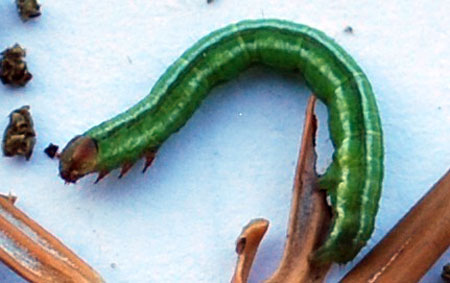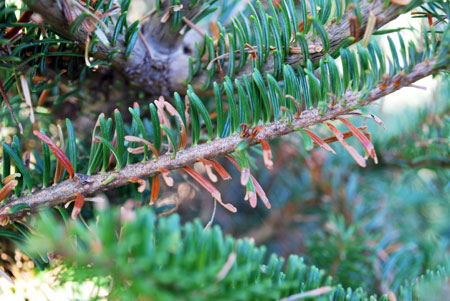Late season insects can still affect the quality of Christmas trees
Warmer fall temperatures may allow insects to continue to be active and affect the quality of Christmas trees before harvest.
Keep scouting!
After Labor Day, attention often shifts from growing trees to the harvest ahead. Growers, however, should continue to scout their plantations for late season pests that can still affect the quality of the foliage of Christmas trees and may make them unsalable. These include spider mites, Eriophyid mites and spruce fir looper.
Spider mites
Spruce spider mites often seem to disappear in hot, dry weather of July and August only to reappear when temperature begin to cool in the fall. Michigan State University Extension advises growers to pay particular attention to the trees you plan to harvest this year. Check for mite activity by closely inspecting the older needles near the tree stem or by sharply rapping shoots over white cardboard or a notebook with white paper.
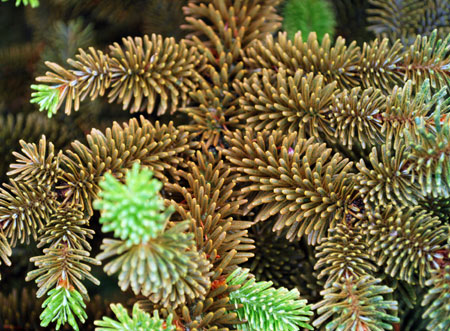
Bronzing of Fraser fir foliage due to spruce spider mite feeding. Photo credit: Jill O’Donnell, MSU Extension
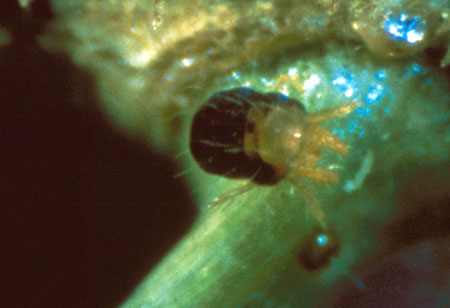
Spruce spider mite adult. Photo credit: USDA Forest Service, Bugwood.org
Eriophyid mites
In conifers, we usually find yellowing or bronzing of the needles and they are often referred to as rust mites. Eriophyid mites are different than other mites we deal with in conifers in that they are very, very tiny and carrot- or hotdog-shaped with only four legs on one end. They can be clear, tan, cream or orange-colored. Immature and adult eriophyid mites suck on the sap in the needle. This feeding can discolor and distort foliage of many conifer species. We find these mites on a number of conifers including spruce, white pine, Scotch pine, Fraser fir, concolor fir and hemlock.
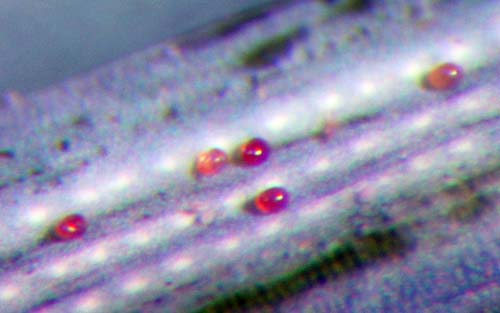
Eriophyid mites on a spruce needle. Photo credit: Howard Russell, MSU Diagnostic Services
When heavy mite populations are present, their damage gives the needle a dusty, bronze to rust-colored appearance. Similar damage can occur from winter injury, nutrient deficiency, drought or herbicide damage. To tell if the damage is caused by these mites, look at the needles with a hand lens and even then you may overlook them if you don‘t know what you’re looking for.
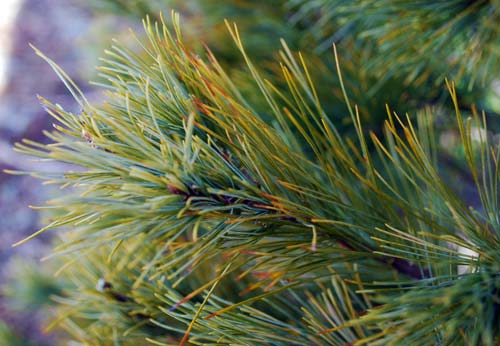
Yellowing and curling of white pine foliage. Photo credit: Jill O’Donnell, MSU Extension
Spruce-fir looper
This insect may go unnoticed on Fraser or balsam fir until the trees have a significant amount of damage. The caterpillar is anywhere from 0.25 to 1 inch long, light green with dark green and white stripes. The head capsule is light brown. The larvae chew notches out of the needles which, after a few days, turn brown in color. You will also find needles hanging from silken threads. Most of the damage can be in the top part of the tree, but feeding can be found throughout the tree. Use a scouting board or white sheet of paper and tap the trees, like sampling for spider mites, to find these larvae.
View the MSU Extension spruce-fir looper factsheet for more information on this insect.



 Print
Print Email
Email